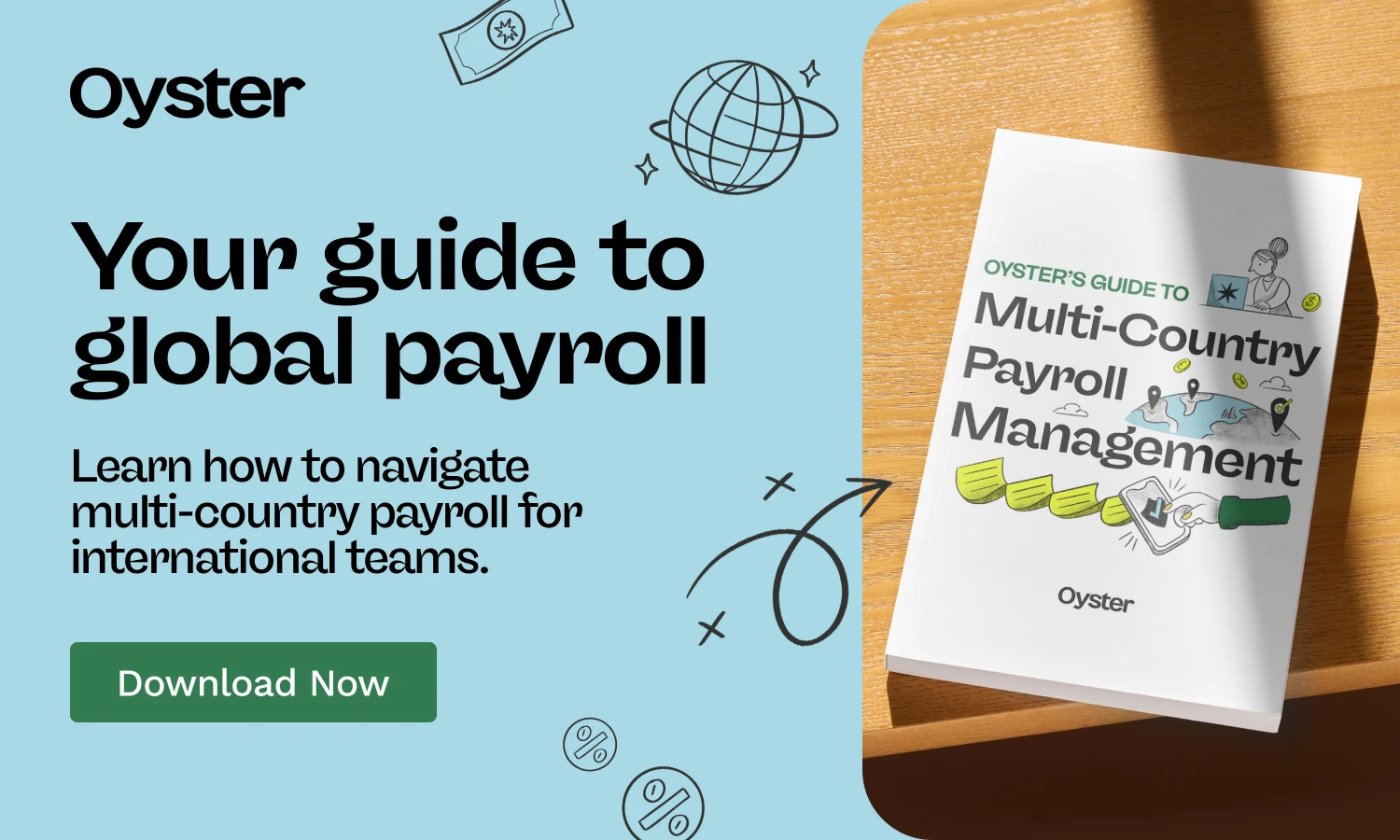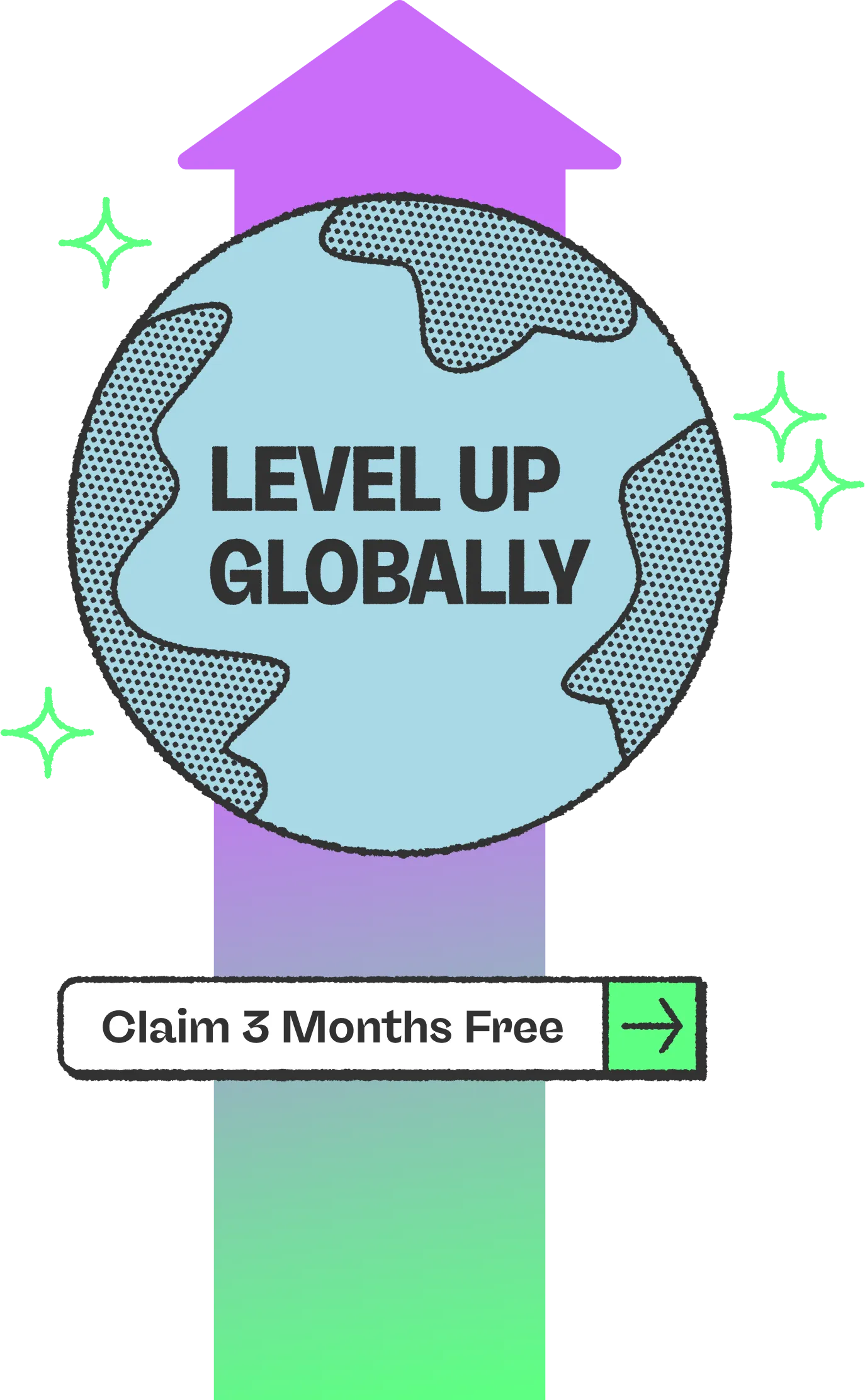What is payroll accounting? Types and examples

Payroll accounting
It’s tempting to treat payroll as background noise—a process that hums along until it doesn’t. But for growing teams, especially those hiring across borders, things can get complicated fast. Every new hire in a new country adds another set of rules, currencies, timelines and expectations.
Payroll accounting is what keeps it all grounded.
In this guide, we’ll explain what payroll accounting actually involves, why it matters more as you scale, and how to build a payroll foundation that works anywhere.
What is payroll accounting?
Payroll accounting is the process of recording, managing, and analyzing everything related to employee compensation. That includes salaries or wages, overtime, bonuses, commissions, employer-paid benefits, and required tax withholdings like income taxes, social security, and health insurance contributions.
Whether you’re managing five employees in one office or 500 across multiple countries, a solid payroll accounting process keeps compensation on track. It provides a clear, consistent view of labor costs and ensures that employees get paid accurately and on time. And that, in turn, boosts trust, morale, and retention.
But it's not just about cutting paychecks.
Payroll accounting also plays a big part in compliance, helping businesses meet local labor laws and tax regulations while keeping financial records accurate. When handled poorly, it can open the door to costly mistakes, especially for global teams dealing with different currencies, tax systems, and benefit structures.
Types of payroll accounting
Payroll accounting entries—often called journal entries—track every part of the compensation process, from wages earned to payments issued. Most companies use payroll software to generate these entries automatically and sync them with the general ledger. But some smaller or early-stage businesses may still enter records manually. Either way, the goal is the same: accurate books and on-time pay for your team.
Here are the most common types of payroll accounting entries and when to use them:
Initial recording
This is the first step in accounting for payroll, where you log gross wages, taxes, and benefit costs for each pay period. In other words, it reflects what employees have earned. This entry sets the baseline for your payroll expense and gives a clear view of what it costs to employ your staff.
Accrued wages
Because most companies pay employees after they finish the work, there’s often a timing gap between when wages go on the books and when they’re paid. For example, if an employee finishes work on July 31 but doesn't get paid until August 5, that amount should still appear in July’s records. Accrued wage entries account for pay that’s owed but hasn’t gone out yet, keeping your financials aligned even before the money leaves your account.
Manual payments
Despite the name, manual payments aren't about writing checks by hand. They refer to payments made outside the normal payroll cycle, such as back pay, final checks, or corrections. Because these payments fall outside regular payroll runs, they often require separate accounting. Still, every manual payment must go into your payroll system and general ledger to ensure clean payroll reports and accurate year-end totals.

Payroll accounting in 5 steps
Effective payroll accounting starts with structure. Here's how to do it right:
1. Identify payroll items
List every component of employee compensation: salaries, hourly wages, overtime, bonuses, commissions, benefits, tax withholdings, and other deductions. A detailed checklist helps clarify what you need to track and how to categorize it in your accounting system.
2. Set up payroll accounts
Create dedicated accounts in your general ledger for each payroll category—wages payable, payroll taxes, employee benefits, and so on. This ensures that the books reflect what the company owes, what it’s already paid, and what still needs to be filed or submitted.
3. Record payroll entries
Log journal entries for every pay period. Include gross wages, paid time off (PTO), withheld taxes, employer contributions, and benefit costs. Together, these entries show what payroll really costs beyond take-home pay.
4. Calculate net pay
Once you factor in all deductions, such as income tax, social security, health insurance, and retirement contributions, you're left with net pay. This is the amount you’ll schedule for direct deposit and what employees will receive on payday.
5. Make payments and file taxes
With everything calculated, you're ready to run payroll. Whether using in-house systems, a payroll accounting service, or dedicated software, this step covers distributing employee pay and meeting your tax obligations. You’ll need to submit the right local and national forms, send payments on time, and double-check that all deductions—like healthcare and retirement contributions—are correct.
Common payroll accounting challenges
Many businesses turn payroll automation tools when they run into these common challenges—or want to avoid them altogether.
Tax compliance
Tax laws vary widely by country, region, and even municipality. From income tax and social security to unemployment insurance and local contributions, staying compliant means tracking every detail and filing on time. You’ll also need to keep employee records, like W-4s, I-9s, and direct deposit authorizations, on file and up to date.
Handling varied pay structures
Paying a mix of full-time employees, independent contractors, and freelancers can complicate things even more. Salaries, hourly wages, overtime, bonuses, commissions, and one-off invoices all follow different rules and accounting protocols. Without a reliable payroll system, it’s easy to lose track of what you owe, when it’s due, and how you should report it.
Managing remote or international workers
Distributed teams introduce new challenges: multiple currencies, tax rules, benefit laws, and payment schedules. An all-in-one payment accounting platform with employer of record (EOR) services, like Oyster, helps simplify compliance and reduce administrative overhead. It also keeps international payroll running smoothly.
Avoiding payroll errors
Payroll errors, from miscalculations to missed payments, can damage employee trust and create legal and financial risk. Mistakes also mean more time spent fixing issues, filing corrections, and answering urgent questions. Automation and accurate records go a long way toward reducing that risk.
When to use payroll software
As your business grows or expands across borders, managing payroll manually can easily turn into a headache—and a liability.
Here are some signs that it might be time to upgrade to payroll software:
Manual payroll processes are slowing you down
When your team spends hours tracking hours, calculating deductions, and entering data into spreadsheets, the payroll process can get overwhelming and time-consuming. Payroll software automates repetitive tasks, reduces errors, and ensures that everything’s accurate from the start.
Compliance is a growing concern
Payroll accounting comes with strict deadlines and constantly evolving tax requirements. Modern tools automate filings, monitor changes in local laws, and help your business stay compliant, no matter where your team works.
You’re seeing too many payroll errors
Miscalculated pay, missing overtime, and forgotten withheld taxes don’t just frustrate employees. They can also lead to audits and penalties. Payroll accounting software helps catch mistakes early with real-time validation and built-in accuracy checks.
You’re paying in multiple currencies
International payroll accounting involves shifting exchange rates, local benefit requirements, and varying labor laws. A global payroll solution like Oyster’s helps you run fast, compliant payroll from a single platform and pay your team in multiple currencies worldwide.
Make payroll accounting easier with Oyster
When payroll accounting starts to slow you down, it’s time for a smarter solution. As your team grows, so does the need for speed, accuracy, and fewer manual tasks.
Oyster automates payroll, invoices, and reimbursements, helping you cut down on errors and keep operations running smoothly. Whether scaling a distributed team or simplifying day-to-day processes, Oyster makes it easy to stay organized and focused on growth.
Explore Oyster’s global payroll solution by booking a demo.

About Oyster
Oyster enables hiring anywhere in the world—with reliable, compliant payroll, and great local benefits and perks.

Related Resources


.webp)
.webp)







